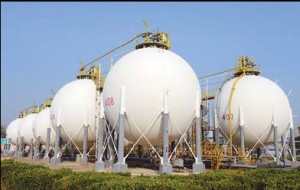 Natural gas fell to session lows after the Energy Information Administration reported a smaller-than-expected inventory decline last week, albeit well above the five-year average. Forecasts for mild weather across most of the US this week and the next further weighed on prices.
Natural gas fell to session lows after the Energy Information Administration reported a smaller-than-expected inventory decline last week, albeit well above the five-year average. Forecasts for mild weather across most of the US this week and the next further weighed on prices.
Natural gas for delivery in February traded 4.64% lower at $2.836 per million British thermal units at 15:38 GMT, having fallen to $2.814, the lowest since January 13th, minutes after the reports release. The contract settled 5.05% higher at $2.974 yesterday but prices are down 9.1% for the week so far.
The EIA reported that US natural gas inventories fell by 216 billion cubic feet in the seven days through January 16th, compared to analysts projections for a drop in the range of 220-230 bcf. This was above the five-year average decrease of 176 bcf and last years drop of 133 bcf during the comparable period.
Total gas held in US storage hubs amounted to 2.637 trillion cubic feet, expanding the deficit to the five-year average of 2.790 trillion to 5.5% from 3.8% during the previous period. The surplus to the year-ago stockpile level of 2.438 trillion cubic feet narrowed to 8.2% from 11.0% a week earlier. Next week’s report is expected to reflect a much thinner inventory withdrawal that would bring deficits to ~100 bcf once again as the recent overall mild conditions across the US get factored in.
Inventories in the East Region slid by 118 bcf to 1.350 trillion and were 5.3% below the average, while the West Region saw stockpiles fall by 16 bcf to 384 bcf, bringing them 1.8% below the average. Stockpiles in the Producing Region fell by 82 bcf to 903 bcf, a deficit of 7.4% to the five-year average.
Weather outlook
Forecasts for mild weather across large parts of the US continued to drag on prices. According to NatGasWeather.com, natural gas demand in the US through January 28th will be moderate compared to normal, with a warm weather trend for the West for the following seven days, while the East will be engulfed by colder conditions.
The majority of the country continues to enjoy mild temperatures, apart from from the Southeast and Texas which will be affected by a weather system with snow accumulations behind it. A more notable system will track across the Midwest and Northeast early next week and push deep into the Southeast, carrying lower-than-usual readings.
Additional weather systems will follow throughout the week, NatGasWeather.com reported, lowering temperatures for the Great Lakes and Northeast to below normal and carrying rain and snow. Although the weather data are still unclear for the beginning of February, frigid Arctic air will likely struggle to push out southward from these regions, allowing for the remaining portions of the US to warm up above the usual due to the combination of high pressure and the arrival of mild Pacific weather systems.





